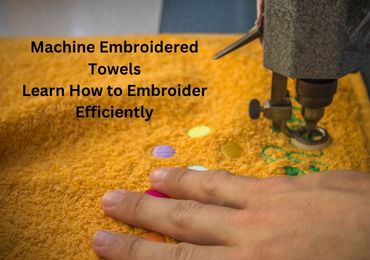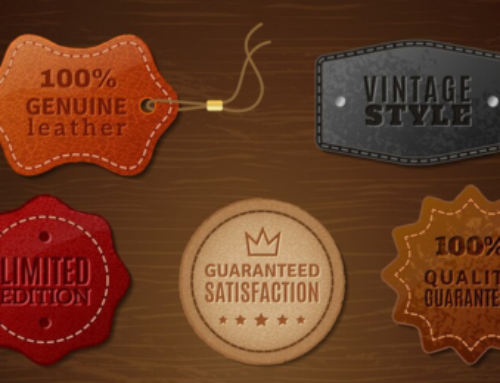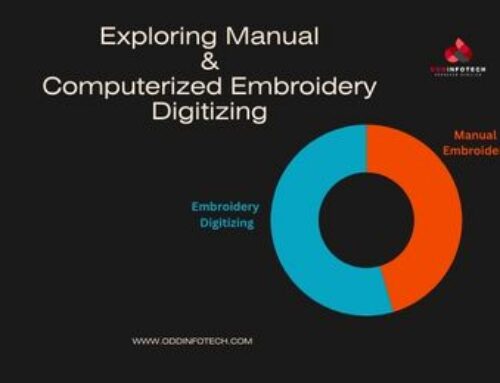Embroider towels by machine can add a personal touch to your linens and make for beautiful gifts or decorative pieces in your home. While it may seem daunting at first, with the right equipment and technique, machine embroidery on towels can be a fun and rewarding hobby. In this guide, we’ll walk you through the process step by step, from selecting the right machine to adding the finishing touches to your embroidered towels.
Introduction to Machine Embroidery on Towels
Machine embroidery involves using a specialized sewing machine to stitch intricate designs onto fabric. When it comes to embroidering towels, the process requires some additional considerations due to the thickness and texture of the fabric. However, with the right approach, you can achieve professional-looking results from the comfort of your own home.
Understanding the Different Types of Embroidery Machines
There are various types of embroidery machines available on the market, ranging from basic models designed for beginners to more advanced machines with a wide range of features. Some machines are specifically designed for embroidery, while others are combination machines that can also perform regular sewing tasks. It’s essential to choose a machine that meets your skill level and budget.
Embroidery machines have revolutionized the art of embroidery, offering both hobbyists and professionals a faster, more efficient way to create intricate designs on fabric. With advancements in technology, there are now various types of embroidery machines available on the market, each with its own features, capabilities, and price points. In this article, we will explore the different types of embroidery machines, their functionalities, and how to choose the right one for your needs.
Introduction to Embroidery Machines
Before delving into the different types of embroidery machines, let’s first understand what embroidery machines are and how they work.
What is an Embroidery Machine?
An embroidery machine is a specialized sewing machine equipped with features specifically designed for stitching intricate designs, patterns, and motifs onto fabric. Unlike traditional sewing machines, which are primarily used for stitching seams and hems, embroidery machines have built-in or downloadable designs that are stitched automatically onto the fabric with precision and accuracy.
How Do Embroidery Machines Work?
Embroidery machines work by using a combination of mechanical, electronic, and computerized components to control the movement of the fabric and the needle. The machine’s needle follows a programmed embroidery design, stitching colorful threads onto the fabric in a predetermined sequence to create the desired pattern or image.
Types of Embroidery Machines
There are several types of embroidery machines available on the market, each catering to different user requirements, skill levels, and budget considerations. Let’s explore some of the most common types of embroidery machines:
Single-Needle Embroidery Machines
Single-needle embroidery machines, also known as home embroidery machines or domestic embroidery machines, are designed for hobbyists, crafters, and small businesses. These machines typically feature a single needle and a small embroidery area, making them suitable for personal projects, monogramming, and small-scale embroidery tasks.
Multi-Needle Embroidery Machines
Multi-needle embroidery machines are professional-grade machines equipped with multiple needles, ranging from two to sixteen or more. These machines are designed for high-volume production, allowing users to embroider multiple colors simultaneously without the need for manual thread changes. Multi-needle machines are ideal for commercial embroiderers, businesses, and entrepreneurs who require efficient production capabilities.
Industrial Embroidery Machines
Industrial embroidery machines are heavy-duty machines designed for continuous, high-speed embroidery production in commercial settings. These machines feature robust construction, powerful motors, and large embroidery areas, making them suitable for embroidering large batches of garments, textiles, and promotional items. Industrial embroidery machines are commonly used in garment manufacturing, apparel production, and embroidery businesses.
Combination Embroidery and Sewing Machines
Combination embroidery and sewing machines offer the versatility of both embroidery and sewing functions in a single unit. These machines allow users to switch between embroidery and sewing modes, making them suitable for individuals who require the flexibility to perform both tasks without the need for separate machines. Combination machines are popular among home sewists, quilting enthusiasts, and small businesses.
Computerized Embroidery Machines
Computerized embroidery machines are equipped with advanced technology and digital features that allow users to create, edit, and customize embroidery designs with ease. These machines often include built-in design libraries, touchscreen interfaces, and USB connectivity for importing and exporting embroidery files. Computerized embroidery machines offer precision, accuracy, and automation, making them suitable for users of all skill levels.
Choosing the Right Machine for Towel Embroidery
When selecting an embroidery machine for towel embroidery, consider factors such as hoop size, stitching speed, and built-in designs. Look for machines with features like automatic thread tension and thread cutting, as these can make the embroidery process more efficient and precise. Additionally, opt for a machine with a sturdy build and reliable performance to ensure consistent results.
Selecting Suitable Towels for Machine Embroidery
Not all towels are created equal when it comes to machine embroidery. Choose towels made from high-quality, absorbent fabric like cotton or linen, as these materials provide a stable base for embroidery stitches. Avoid towels with a high pile or textured surface, as they can make it challenging to achieve clean, precise embroidery designs.
Preparing the Embroidery Design and Stabilizing the Towel
Before embroidering your towels, prepare the embroidery design using software compatible with your machine. Once you’ve chosen your design, select a suitable stabilizer to reinforce the fabric and prevent distortion during stitching. Cut the stabilizer to fit the size of your hoop and attach it to the back of the towel using temporary adhesive spray or pins.
Setting Up the Embroidery Machine for Optimal Results
Before you begin embroidering, take the time to familiarize yourself with your machine’s settings and controls. Adjust the tension and stitch length as needed for the type of thread and fabric you’re using. Test the embroidery machine on a scrap piece of fabric to ensure the stitches look uniform and the tension is correct before starting on your towels.
Hooping the Towel Correctly
Proper hooping is essential for achieving clean, professional-looking embroidery on towels. Place the towel flat on a clean, smooth surface and position the embroidery hoop over the area where you want to embroider. Ensure the fabric is taut and smooth within the hoop, taking care not to stretch or distort it. Tighten the hoop securely to hold the fabric in place during stitching.
Embroidering the Design onto the Towel
Once the towel is hooped and the embroidery machine is set up, it’s time to start stitching your design. Begin the embroidery process, monitoring the machine closely to ensure the stitches are forming correctly and the towel remains securely hooped. Depending on the complexity of the design, embroidery may take some time, so be patient and avoid rushing the process.
Finishing Touches and Cleaning Up
Once the embroidery is complete, remove the towel from the hoop and trim any excess stabilizer from the back of the fabric. Gently press the embroidered area with a steam iron to remove any wrinkles and set the stitches. If desired, add additional embellishments like sequins or beads to enhance the design further. Finally, clean your embroidery machine according to the manufacturer’s instructions to keep it in good working condition.
Troubleshooting Common Embroidery Machine Issues
Embroidery machines can sometimes encounter issues such as thread breakage, bird nesting, or design alignment problems. Refer to your machine’s manual for troubleshooting tips specific to your model, and don’t hesitate to reach out to the manufacturer or a local dealer for assistance if needed.
Tips for Maintaining Machine and Towels
To prolong the life of your embroidery machine and towels, follow a few simple maintenance tips. Keep your machine clean and well-oiled, and store it in a dust-free environment when not in use. Wash embroidered towels gently in cold water and avoid using harsh detergents or bleach, as these can cause fading or damage to the threads.
Creative Ideas for Towel Embroidery Projects
Once you’ve mastered the basics of machine embroidery on towels, the possibilities are endless. Get creative with your designs by incorporating monograms, motifs, or seasonal themes. Embroidered towels make thoughtful gifts for weddings, housewarmings, or holidays, or add a touch of luxury to your own bathroom or kitchen decor.
Exploring Additional Resources for Learning and Inspiration
For further inspiration and guidance on machine embroidery, consider joining online forums or social media groups dedicated to the craft. There are also many instructional books, tutorials, and workshops available to help you improve your embroidery skills and explore new techniques.
Conclusion
Embroidering towels by machine is a satisfying and enjoyable craft that allows you to personalize your linens and express your creativity. By following the steps outlined in this guide and practicing regularly, you can create beautiful embroidered towels that will be cherished for years to come.
FAQs
- Can I embroider towels with any type of embroidery machine?
- While most embroidery machines can be used to embroider towels, it’s essential to choose a machine with features like automatic thread tension and a large hoop size for optimal results.
- Do I need special thread for towel embroidery?
- Using high-quality embroidery thread specifically designed for use with towels can help ensure vibrant colors and durable stitches that withstand frequent washing.
- How do I prevent puckering when embroidering towels?
- Proper stabilization and hooping techniques are key to preventing puckering. Ensure the towel is securely hooped and use a suitable stabilizer to support the fabric during stitching.
- Can I embroider delicate towels like linen or waffle weave?
- While delicate towels can be embroidered, they require extra care and attention during hooping and stitching to prevent damage to the fabric. Use a lightweight stabilizer and lower stitching speed for best results.
- How can I add texture to my embroidered towels?
- Experiment with different embroidery techniques such as raised or padded stitches, or incorporate textured threads like metallic or chenille for added dimension and interest.
Ready to elevate your brand with stunning embroidered towels? Look no further! Visit our website today to discover endless design possibilities and receive a personalized quote tailored just for you. Let’s transform your vision into reality – click the link below and let’s get started!







Leave A Comment